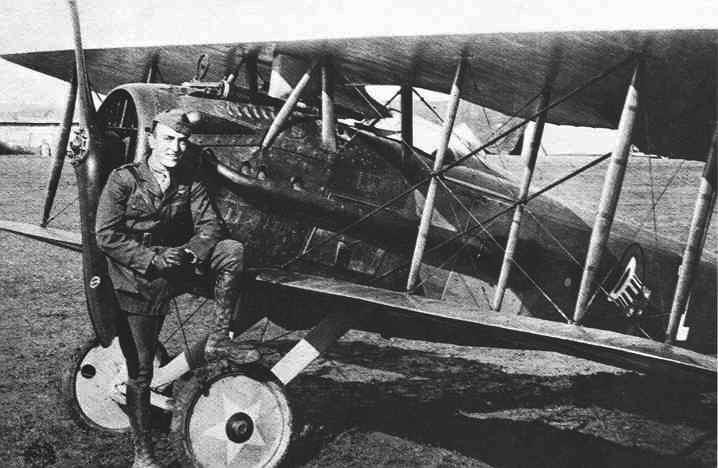
Real men don’t use parachutes.
That, at least, was the official position of America’s military commanders during World War One.
The “Great War” (1914-1918) was the first time that airplanes were used in combat, or that anyone even imagined they had strategic military value.
When Captain Eddie Rickenbacker – America’s “ace of aces” with 26 confirmed aerial victories – first squeezed into the cockpit of his SPAD XIII (see the photo above), heavier-than-air flight had been possible for only about a decade and a half. Needless to say, almost everything about these planes was primitive and experimental.
It’s impossible to overstate how dangerous it was to fly one – let alone face the machine guns of enemy German aircraft.
The pilots called them chicken coops. They were like motorized kites, an assemblage of wooden strips and wires.
Fire is what scared the pilots the most. In John R. Ross’ biography of Rickenbacker, Enduring Courage, he writes: “It’s hard to imagine a more combustible creation than the World War One airplane: a virtual flying pyre, made of cotton fabric or linen, stretched over wooden frames, and doped with highly flammable finish to stiffen the whole assembly.
“Not enemy tracers alone but a spark from one’s own engine might instantly turn a smooth, routine flight into mortal agony. Fanned by the stiff breeze of flight, flames could consume a machine in moments, leaving the pilot himself wrapped in fire far above the ground.”
That’s when hard choices had to be made. A pilot had only seconds to decide whether to face the flames or jump to his death from two miles up. Some, seeking a third option, always kept a pistol at hand.
One out of nine American pilots in the First World War did not survive training. The average life expectancy of those who graduated to combat was a mere 60 days.
What about parachutes? Even though rudimentary chutes existed, they were never cleared by the U.S. military bureaucracy.
Ross provides the incredible explanation: “Headquarters believed that a pilot would be far more inclined to leave his airplane at the first hint of trouble if he could bail out, thus unacceptably wasting equipment.”
Swivel chair commanders, most of whom had never been near the peril of a dogfight, suggested that it was unmanly for pilots to seek a way to survive catastrophe. All of this contributed to the notion of the “romance of the skies,” in which heroic young men were willing to risk everything – literally flying without a net or a chute.
Unrealistic expectations about male behavior persist to this day:
Real men go it alone. Tough guys never cry. Self-made men don’t ask for help, and never put themselves in a position where they have to depend on the performance or kindness of others.
This isn’t heroic behavior. Let’s call it what it is: utter foolishness.
After declaring everything God had made to be “very good,” what’s the first thing in the Bible that God says is “not good”? “It is not good that the man should be alone” (Genesis 2:18).
It was not good then. It is not good today. Even though studies consistently reveal that the number and quality of personal relationships are directly related to emotional and physical health, 60% of adult American males cannot name a best friend.
One hundred years ago, Eddie Rickenbacker’s enduring courage helped inspire others to be strong.
Our call today is to inspire others to be strong enough, and wise enough, to choose partnership over solo flights.
Great friendships, after all, can be life-saving parachutes.
